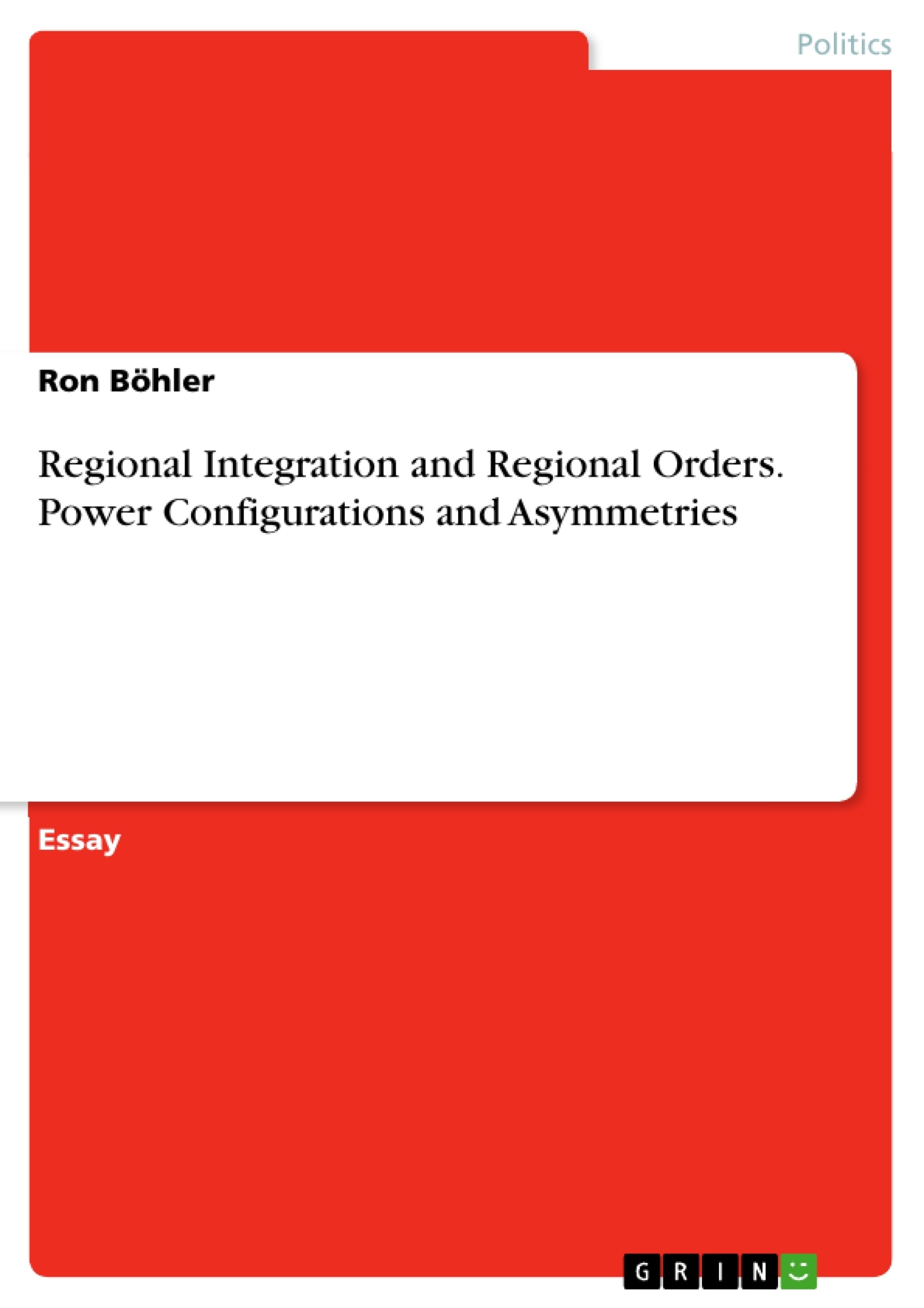‘[T]he long history of failed regional agreements in South America and some developments in the integration process have raised some doubts about the capacity of bloc members to accomplish their ambitious intentions’. The hesitant progress in Latin American regional integration (Mercosur) caused increasing distrust if the uneven distribution of power resources and abilities within the region can lead to successful and steady integration processes. Is the regional hegemon Brazil perhaps too powerful in order to let this demanding project succeed?
Power configurations in regional orders are, so will be argued, a double-edged sword: While asymmetric power structures are possibly a prerequisite for deepening integration processes, but they can also cause conflict between less powerful states on the one hand and leading ones on the other. According to power transition theory, satisfaction about the prevalent power structures among actors can be assumed to be the second precondition for effective integration. Conflict is then guaranteed when power parity between two or more dissatisfied actors is established. Both perspectives will be discussed and assessed in the subsequent sections, after the concept of power in multilateral relations is defined and asymmetries detected. Two examples, the European Union and Mercosur, shall exemplify the efficacies and tensions behind imbalanced power structures among regional powers and their will and ability to integrate further.
Inhaltsverzeichnis (Table of Contents)
- INTRODUCTION
- CONCEPT & THEORETICAL ASSUMPTIONS
- 'QUID PRO QUO': The Case of the EUROPEAN UNION
- THE CASE OF MERCOSUR: A SLOW TRANSFORMATION
- CONCLUSIONS: POWER ASYMMETRIES AND INTEGRATION
Zielsetzung und Themenschwerpunkte (Objectives and Key Themes)
This essay examines the influence of power configurations and asymmetries on regional integration processes, arguing that while power imbalances can facilitate integration, they can also lead to conflicts.
- The relationship between power configurations and regional integration.
- The application of power transition theory to regional integration.
- The role of satisfaction with power structures in promoting or hindering integration.
- Case studies of the European Union and Mercosur, highlighting the impact of power dynamics on integration.
- The potential for power shifts to impact regional integration processes.
Zusammenfassung der Kapitel (Chapter Summaries)
- INTRODUCTION: The essay introduces the central argument that power configurations in regional orders can be both beneficial and detrimental to integration. It uses the example of Mercosur to illustrate the challenges posed by uneven power distributions.
- CONCEPT & THEORETICAL ASSUMPTIONS: This chapter defines power in international relations and introduces the concept of power transition theory, which posits that integration is more likely when power structures are stable and actors are satisfied with their position.
- 'QUID PRO QUO': The Case of the EUROPEAN UNION: This chapter analyzes the European Union, using the Franco-German axis as a case study. It demonstrates how integration has been successful when power asymmetries are accepted and mutually beneficial.
- THE CASE OF MERCOSUR: A SLOW TRANSFORMATION: This chapter explores the challenges faced by Mercosur due to the uneven power distribution between Brazil and other member states. It examines how power imbalances can create dissatisfaction and hinder integration.
Schlüsselwörter (Keywords)
This essay focuses on the key concepts of power configurations, power transition theory, regional integration, power asymmetries, satisfaction, the European Union, Mercosur, and the dynamics of regional orders.
- Citation du texte
- Ron Böhler (Auteur), 2011, Regional Integration and Regional Orders. Power Configurations and Asymmetries, Munich, GRIN Verlag, https://www.grin.com/document/376547



